-
 Bitcoin
Bitcoin $105,734.0170
-1.51% -
 Ethereum
Ethereum $2,414.7328
-3.26% -
 Tether USDt
Tether USDt $1.0002
0.00% -
 XRP
XRP $2.1748
-2.62% -
 BNB
BNB $647.5663
-1.72% -
 Solana
Solana $148.1710
-3.81% -
 USDC
USDC $0.9999
-0.01% -
 TRON
TRON $0.2799
-0.02% -
 Dogecoin
Dogecoin $0.1586
-4.17% -
 Cardano
Cardano $0.5440
-5.03% -
 Hyperliquid
Hyperliquid $37.0680
-6.59% -
 Bitcoin Cash
Bitcoin Cash $501.2052
-4.01% -
 Sui
Sui $2.6846
-3.47% -
 Chainlink
Chainlink $12.8488
-3.38% -
 UNUS SED LEO
UNUS SED LEO $8.9480
-1.51% -
 Avalanche
Avalanche $17.2059
-3.87% -
 Stellar
Stellar $0.2270
-4.75% -
 Toncoin
Toncoin $2.7889
-3.93% -
 Shiba Inu
Shiba Inu $0.0...01126
-1.76% -
 Litecoin
Litecoin $83.6893
-3.36% -
 Hedera
Hedera $0.1445
-4.49% -
 Monero
Monero $312.4014
-2.58% -
 Dai
Dai $1.0000
0.00% -
 Ethena USDe
Ethena USDe $1.0001
-0.01% -
 Polkadot
Polkadot $3.2920
-3.32% -
 Bitget Token
Bitget Token $4.4629
-1.81% -
 Uniswap
Uniswap $6.5386
-8.42% -
 Aave
Aave $260.3780
-6.01% -
 Pepe
Pepe $0.0...09308
-4.54% -
 Pi
Pi $0.4864
-3.04%
Detailed explanation of Coinbase trading operations: every step of buying and selling currencies
Coinbase offers a user-friendly platform for trading cryptocurrencies, with steps from account setup to managing your portfolio detailed for effective navigation.
Apr 07, 2025 at 08:57 am
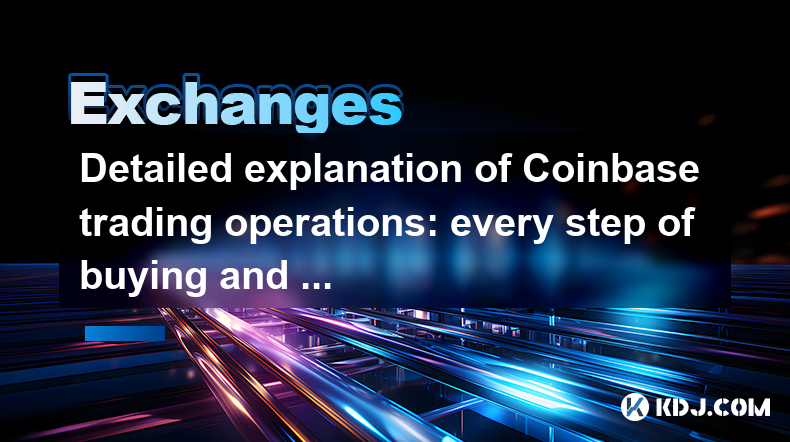
Coinbase is a leading cryptocurrency exchange platform that facilitates the buying, selling, and trading of various cryptocurrencies. Understanding the trading operations on Coinbase is essential for users looking to navigate the platform effectively. This article will provide a detailed explanation of every step involved in buying and selling currencies on Coinbase, from account setup to executing trades and managing your portfolio.
Setting Up Your Coinbase Account
Before you can start trading on Coinbase, you need to set up an account. The process is straightforward but requires attention to detail to ensure security and compliance.
- Visit the Coinbase website and click on the "Sign Up" button.
- Enter your personal information, including your name, email address, and a strong password. Make sure to use a password that is unique and difficult to guess.
- Verify your email address by clicking on the confirmation link sent to your inbox.
- Complete the identity verification process. Coinbase requires users to verify their identity to comply with regulatory requirements. You will need to provide a government-issued ID and possibly a selfie for verification.
- Set up two-factor authentication (2FA) for added security. This can be done using an authenticator app or a text message.
Funding Your Coinbase Account
Once your account is set up and verified, you need to fund it to start trading. Coinbase supports various funding methods, including bank transfers, credit/debit cards, and even PayPal in some regions.
- Link your bank account by providing the necessary details. This might involve micro-deposits that you need to confirm to verify the account.
- Add a credit or debit card if you prefer to use this method. You will need to enter your card details and may need to verify the card through a small transaction.
- Use PayPal if available in your region. Simply log in to your PayPal account and authorize the connection to Coinbase.
- Deposit funds into your Coinbase account using your chosen method. The time it takes for the funds to become available can vary depending on the method used.
Buying Cryptocurrencies on Coinbase
With your account funded, you can now proceed to buy cryptocurrencies. Coinbase offers a user-friendly interface that makes it easy to purchase digital assets.
- Navigate to the "Buy/Sell" section on the Coinbase platform.
- Select the cryptocurrency you want to buy from the list of available options. Coinbase supports a variety of cryptocurrencies, including Bitcoin, Ethereum, and Litecoin.
- Enter the amount you wish to spend or the quantity of the cryptocurrency you want to buy. You can choose to buy in your local currency or in the cryptocurrency itself.
- Review the transaction details, including the total cost, fees, and the exchange rate. Make sure you are comfortable with these details before proceeding.
- Confirm the purchase. You may be prompted to enter your 2FA code to complete the transaction.
- Wait for the transaction to be processed. The time it takes for the cryptocurrency to appear in your wallet can vary depending on the network congestion and the method used to fund your account.
Selling Cryptocurrencies on Coinbase
Selling cryptocurrencies on Coinbase is just as straightforward as buying them. Here’s how you can do it:
- Go to the "Buy/Sell" section on the Coinbase platform.
- Choose the cryptocurrency you want to sell from your portfolio.
- Enter the amount you wish to sell, either in the cryptocurrency itself or in your local currency.
- Review the transaction details, including the total amount you will receive after fees and the exchange rate.
- Confirm the sale. You may need to enter your 2FA code to proceed.
- Wait for the transaction to be processed. The funds will be credited to your Coinbase account, and you can then withdraw them to your bank account or another payment method.
Managing Your Portfolio on Coinbase
After buying and selling cryptocurrencies, it’s important to manage your portfolio effectively. Coinbase provides various tools to help you track your investments and make informed decisions.
- Monitor your portfolio by regularly checking the "Portfolio" section on Coinbase. This will show you the current value of your holdings and any changes in price.
- Use the price alerts feature to stay informed about significant price movements. You can set alerts for specific cryptocurrencies and price thresholds.
- Diversify your investments to spread risk. Coinbase allows you to buy and sell multiple cryptocurrencies, so you can build a diversified portfolio.
- Keep track of your transaction history to understand your trading activity and performance over time. This can be found in the "Transactions" section of your account.
- Consider using Coinbase Pro for more advanced trading features. Coinbase Pro offers lower fees and more sophisticated trading tools for experienced traders.
Withdrawing Funds from Coinbase
When you want to access your funds, you can withdraw them from Coinbase to your bank account or another payment method. Here’s how to do it:
- Navigate to the "Send/Receive" section on Coinbase.
- Select the cryptocurrency you want to withdraw or choose to withdraw in your local currency.
- Enter the amount you wish to withdraw. Make sure you have enough funds in your Coinbase account to cover the withdrawal.
- Choose the destination for your funds. This could be your linked bank account, a credit/debit card, or a PayPal account if available.
- Review the withdrawal details, including any fees and the estimated time for the funds to arrive.
- Confirm the withdrawal. You may need to enter your 2FA code to proceed.
- Wait for the withdrawal to be processed. The time it takes for the funds to reach your destination can vary depending on the method used.
Understanding Coinbase Fees
Coinbase charges fees for various services, including buying, selling, and withdrawing cryptocurrencies. Understanding these fees is crucial for managing your trading costs effectively.
- Transaction fees are charged when you buy or sell cryptocurrencies on Coinbase. These fees vary depending on the payment method and the size of the transaction.
- Withdrawal fees are charged when you withdraw funds from Coinbase to your bank account or another payment method. These fees can vary depending on the method used and the amount withdrawn.
- Network fees are charged for transactions on the blockchain. These fees are not set by Coinbase but are determined by the cryptocurrency network itself.
- Coinbase Pro fees are generally lower than those on the standard Coinbase platform. If you are an active trader, using Coinbase Pro can help you save on trading costs.
Security Measures on Coinbase
Security is a top priority for Coinbase, and the platform employs various measures to protect user accounts and funds.
- Two-factor authentication (2FA) adds an extra layer of security to your account. It requires you to enter a code from an authenticator app or a text message to log in or complete transactions.
- Cold storage is used to store the majority of user funds offline, reducing the risk of hacking and theft.
- Insurance coverage is provided by Coinbase to protect against losses due to security breaches or theft.
- Regular security audits are conducted to identify and address potential vulnerabilities in the platform.
- User education is promoted through resources and guides to help users understand best practices for securing their accounts and funds.
Common Questions Related to Coinbase Trading Operations
Q: How long does it take to set up a Coinbase account?
A: Setting up a Coinbase account can take anywhere from a few minutes to a few days, depending on the speed of the identity verification process. Once you have submitted your information, you will need to wait for Coinbase to review and approve your account.
Q: What are the fees for buying and selling cryptocurrencies on Coinbase?
A: Coinbase charges transaction fees that vary depending on the payment method and the size of the transaction. For example, using a bank account typically incurs lower fees than using a credit/debit card. You can find the specific fee structure on the Coinbase website.
Q: Can I use Coinbase Pro for trading?
A: Yes, Coinbase Pro is available for users who want more advanced trading features and lower fees. You can access Coinbase Pro by signing up for a Coinbase account and then navigating to the Coinbase Pro platform.
Q: How secure is Coinbase?
A: Coinbase employs various security measures, including two-factor authentication, cold storage, insurance coverage, and regular security audits, to protect user accounts and funds. While no platform is completely immune to security risks, Coinbase's measures are designed to minimize these risks.
Q: How can I withdraw funds from Coinbase?
A: To withdraw funds from Coinbase, go to the "Send/Receive" section, select the cryptocurrency or local currency you want to withdraw, enter the amount, choose the destination, review the details, and confirm the withdrawal. The time it takes for the funds to reach your destination can vary depending on the method used.
Disclaimer:info@kdj.com
The information provided is not trading advice. kdj.com does not assume any responsibility for any investments made based on the information provided in this article. Cryptocurrencies are highly volatile and it is highly recommended that you invest with caution after thorough research!
If you believe that the content used on this website infringes your copyright, please contact us immediately (info@kdj.com) and we will delete it promptly.
- Coinbase, Crypto, and Amazon: A New Era of Financial Integration
- 2025-07-02 12:30:12
- Binance, Airdrops, and Market Share: A 2025 Crypto Powerhouse
- 2025-07-02 12:30:12
- Crypto Trends 2025: MAGACOIN FINANCE Surges, Ethereum Mining Evolves, and XRP Payouts Innovate
- 2025-07-02 10:30:12
- Ethereum, MAGACOIN FINANCE, and Inflation: A Shift in Crypto Investor Focus
- 2025-07-02 10:30:12
- Kangaroos, Coin Purses, and a Hop Through Money History: You Gotta See This!
- 2025-07-02 10:50:15
- Arbitrum, Robinhood, and ARB Price: Is a Rebound on the Horizon?
- 2025-07-02 10:50:15
Related knowledge
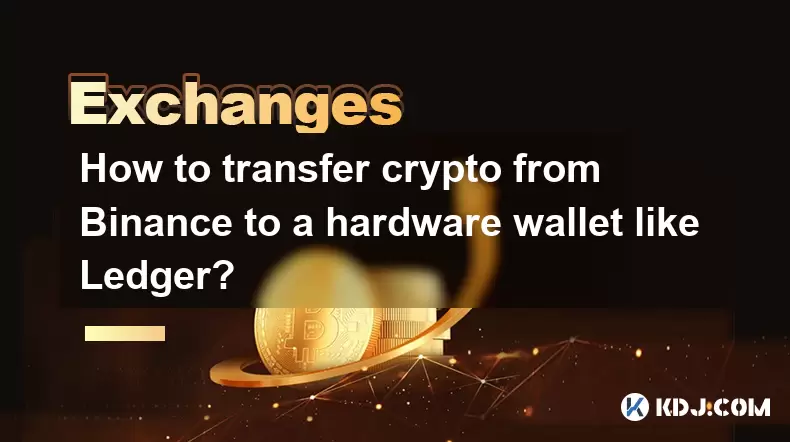
How to transfer crypto from Binance to a hardware wallet like Ledger?
Jul 02,2025 at 01:08pm
Why Transfer Crypto from Binance to a Hardware Wallet?Storing cryptocurrencies on centralized exchanges like Binance exposes users to potential risks such as hacking, exchange insolvency, or account breaches. For enhanced security, many users prefer transferring their assets to a hardware wallet, such as Ledger, which stores private keys offline and pro...
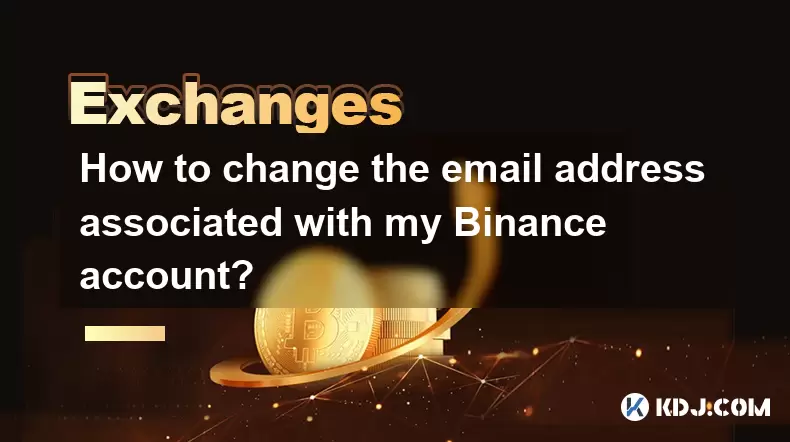
How to change the email address associated with my Binance account?
Jul 02,2025 at 01:42pm
Understanding the Need to Change Your Binance EmailChanging your email address associated with your Binance account is a common requirement for many users. Whether you're updating personal information, switching email providers, or enhancing account security, it's crucial to ensure that this process is done correctly and securely. Binance allows users t...
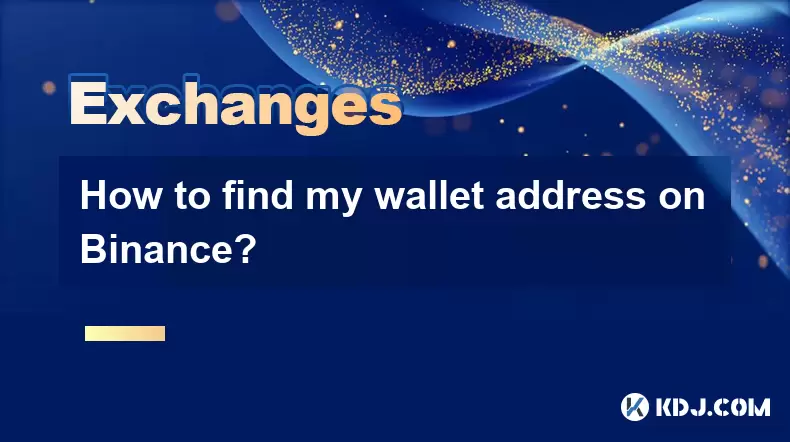
How to find my wallet address on Binance?
Jul 02,2025 at 12:56pm
How to Find Your Wallet Address on BinanceFinding your wallet address on Binance is a crucial step for managing your cryptocurrency assets. Whether you're looking to receive funds, verify transactions, or set up external wallets, knowing how to locate your wallet address ensures smooth and secure operations. Understanding What a Wallet Address IsA walle...
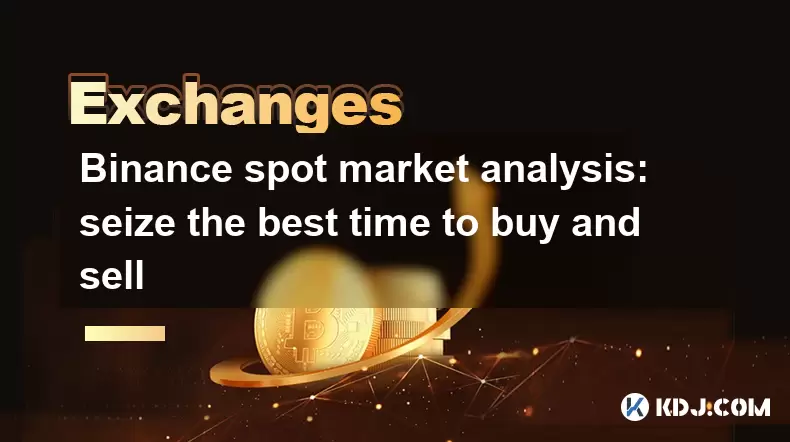
Binance spot market analysis: seize the best time to buy and sell
Jun 19,2025 at 04:56pm
Understanding the Binance Spot MarketThe Binance spot market is one of the most popular platforms for cryptocurrency trading globally. It allows users to trade digital assets at current market prices, making it essential for traders aiming to buy low and sell high. Unlike futures or margin trading, spot trading involves direct ownership of the asset aft...
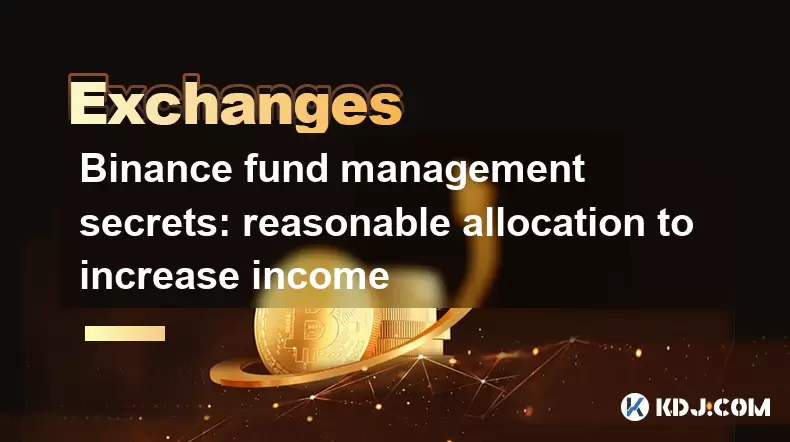
Binance fund management secrets: reasonable allocation to increase income
Jun 22,2025 at 02:29pm
Understanding Binance Fund ManagementBinance fund management involves strategic allocation of your cryptocurrency assets to optimize returns while managing risk. The key to successful fund management lies in understanding how different investment options on the Binance platform can be utilized to create a diversified portfolio. This includes spot tradin...

Binance trading pair selection skills: find the best buying and selling combination
Jun 23,2025 at 02:49am
Understanding the Basics of Trading Pairs on BinanceBefore diving into trading pair selection skills, it's essential to understand what a trading pair is. On Binance, a trading pair refers to two cryptocurrencies that can be traded against each other. For example, BTC/USDT means Bitcoin is being traded against Tether. Each trading pair has its own liqui...

How to transfer crypto from Binance to a hardware wallet like Ledger?
Jul 02,2025 at 01:08pm
Why Transfer Crypto from Binance to a Hardware Wallet?Storing cryptocurrencies on centralized exchanges like Binance exposes users to potential risks such as hacking, exchange insolvency, or account breaches. For enhanced security, many users prefer transferring their assets to a hardware wallet, such as Ledger, which stores private keys offline and pro...

How to change the email address associated with my Binance account?
Jul 02,2025 at 01:42pm
Understanding the Need to Change Your Binance EmailChanging your email address associated with your Binance account is a common requirement for many users. Whether you're updating personal information, switching email providers, or enhancing account security, it's crucial to ensure that this process is done correctly and securely. Binance allows users t...

How to find my wallet address on Binance?
Jul 02,2025 at 12:56pm
How to Find Your Wallet Address on BinanceFinding your wallet address on Binance is a crucial step for managing your cryptocurrency assets. Whether you're looking to receive funds, verify transactions, or set up external wallets, knowing how to locate your wallet address ensures smooth and secure operations. Understanding What a Wallet Address IsA walle...

Binance spot market analysis: seize the best time to buy and sell
Jun 19,2025 at 04:56pm
Understanding the Binance Spot MarketThe Binance spot market is one of the most popular platforms for cryptocurrency trading globally. It allows users to trade digital assets at current market prices, making it essential for traders aiming to buy low and sell high. Unlike futures or margin trading, spot trading involves direct ownership of the asset aft...

Binance fund management secrets: reasonable allocation to increase income
Jun 22,2025 at 02:29pm
Understanding Binance Fund ManagementBinance fund management involves strategic allocation of your cryptocurrency assets to optimize returns while managing risk. The key to successful fund management lies in understanding how different investment options on the Binance platform can be utilized to create a diversified portfolio. This includes spot tradin...

Binance trading pair selection skills: find the best buying and selling combination
Jun 23,2025 at 02:49am
Understanding the Basics of Trading Pairs on BinanceBefore diving into trading pair selection skills, it's essential to understand what a trading pair is. On Binance, a trading pair refers to two cryptocurrencies that can be traded against each other. For example, BTC/USDT means Bitcoin is being traded against Tether. Each trading pair has its own liqui...
See all articles

























































































